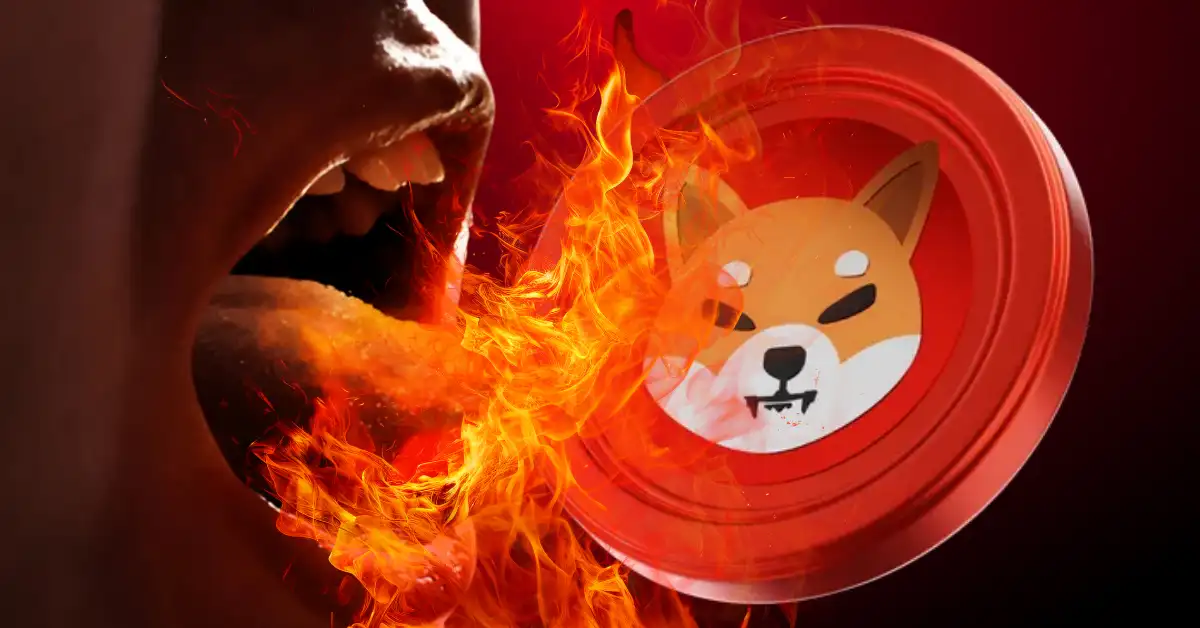The recent surge in Shiba Inu (SHIB) token burns has sparked considerable debate within the cryptocurrency community. Over the past week, an impressive 1.3 billion SHIB tokens were permanently removed from circulation, a move that would typically be expected to drive up the token’s price due to increased scarcity. However, the price of SHIB has continued to decline, leaving investors and analysts puzzled. This apparent paradox raises important questions about the factors influencing SHIB’s price and the effectiveness of token burns as a strategy for price appreciation.
Understanding Token Burns
Token burning is a deflationary mechanism used by cryptocurrency projects to reduce the circulating supply of a token. By sending tokens to an unusable wallet address, the project effectively removes them from the market, creating scarcity. In theory, this should increase the value of the remaining tokens, as demand remains constant while supply decreases. Shiba Inu has embraced this strategy with enthusiasm, with community-led initiatives and dedicated burn portals contributing to the reduction of SHIB’s supply.
The recent burn of 1.3 billion tokens is a testament to the community’s commitment to improving the long-term prospects of the coin. Daily burn rates have surged by over 4,000% at times, driven by significant whale transactions. However, the impact of these burns on the price of SHIB has been limited, suggesting that other factors are at play.
Market Dynamics and Sentiment
The price of a cryptocurrency is influenced by a complex interplay of factors, not just supply and demand. While token burns address the supply side of the equation, they do not guarantee an increase in demand. Several other elements can influence the price of SHIB, including market sentiment, trading volume, overall market conditions, utility, and whale activity.
Market sentiment is a significant driver of cryptocurrency prices. Negative sentiment, influenced by news, social media trends, or broader economic concerns, can outweigh the positive effects of token burns. For instance, increased regulatory scrutiny or negative news about the broader cryptocurrency market can dampen investor enthusiasm, leading to price declines despite reduced supply.
Trading volume is another crucial factor. High trading volume indicates strong interest in a cryptocurrency, while low volume suggests a lack of activity. If trading volume remains low despite token burns, the price is unlikely to see significant gains. In the case of SHIB, low trading volume could indicate a lack of investor interest or confidence in the project’s long-term prospects.
Utility and Adoption
The real-world utility of a cryptocurrency is a key driver of long-term value. Shiba Inu, however, is still largely perceived as a meme coin, lacking the practical applications that drive long-term value for other cryptocurrencies. This perception can influence how investors view the coin and how likely they are to hold it for the long term.
The Shiba Inu ecosystem has expanded to include projects like Shibarium, a layer-2 scaling solution, and TREAT, a new token. However, these initiatives are still in their early stages and have yet to gain significant traction. Until Shiba Inu can demonstrate real-world utility and adoption, its price will remain highly volatile and susceptible to market fluctuations.
The Whale Factor
Whale activity represents a double-edged sword for Shiba Inu. On one hand, large whale transactions can contribute significantly to token burns, as demonstrated by the recent surge in daily burn rates. On the other hand, whale selling can exert significant downward pressure on the price, negating the positive effects of the burns.
The actions of a few large holders can have a disproportionate impact on the market, particularly for a coin like Shiba Inu that is still relatively illiquid compared to more established cryptocurrencies. Monitoring whale activity is crucial for understanding the price dynamics of SHIB. Sudden spikes in selling volume from whale accounts can indicate a loss of confidence in the project, potentially triggering a wider sell-off and driving the price down.
Conclusion
The case of Shiba Inu and its token burn initiatives highlights the complexities of the cryptocurrency market and the challenges of relying solely on supply-side economics to drive price appreciation. While the community’s dedication to burning tokens is commendable, it is clear that other factors are at play that are preventing these efforts from translating into significant price gains.
For Shiba Inu to achieve sustained price growth, it needs to address the fundamental challenges it faces, particularly the perception of limited utility and the reliance on meme-driven momentum. The development of new projects like Shibarium and TREAT is a step in the right direction, but these initiatives need to gain traction and demonstrate real-world value to attract long-term investors.
Moreover, the community needs to continue fostering positive market sentiment and encouraging wider adoption of the Shiba Inu ecosystem. Ultimately, the future of Shiba Inu depends on its ability to evolve beyond its meme coin origins and establish itself as a viable and useful cryptocurrency. Token burns can play a role in this evolution, but they are not a magic bullet. A more holistic approach is needed, one that focuses on building utility, fostering community engagement, and navigating the complex dynamics of the cryptocurrency market. The road ahead may be long and challenging, but with continued dedication and a strategic focus on long-term value creation, Shiba Inu can potentially overcome its current price struggles and achieve its full potential.





